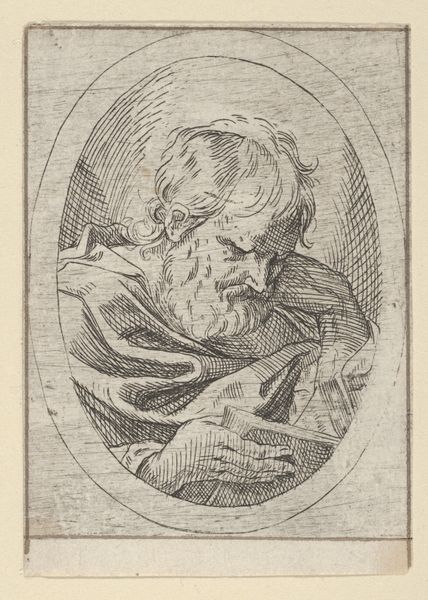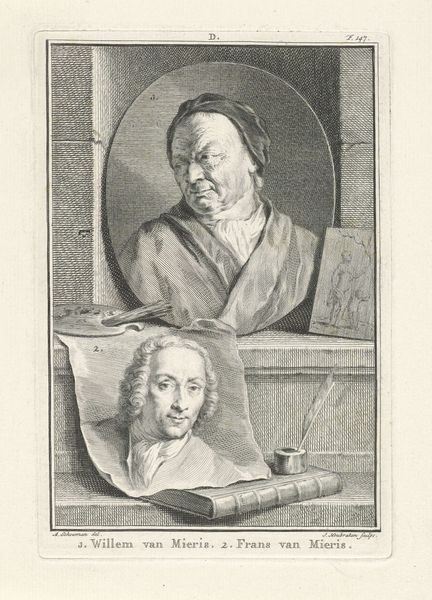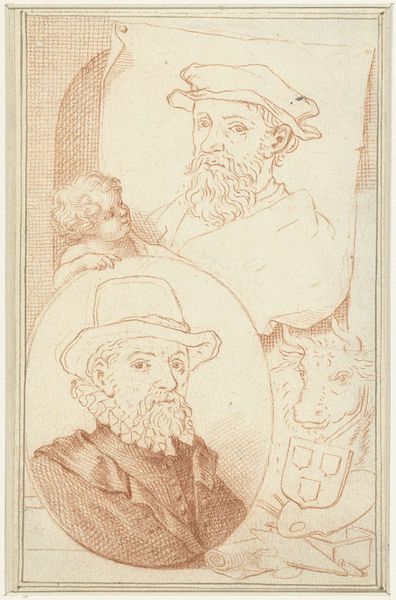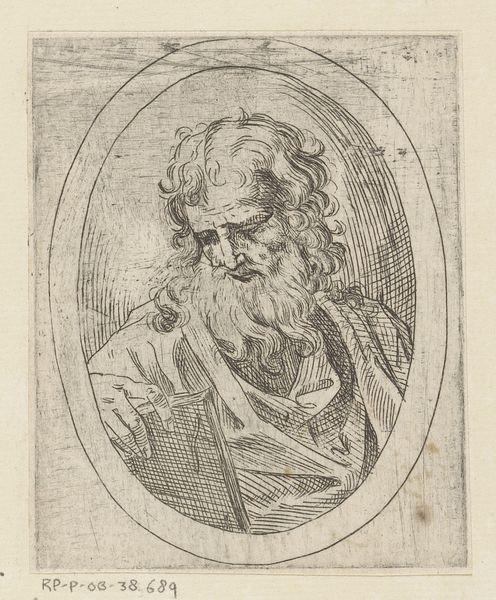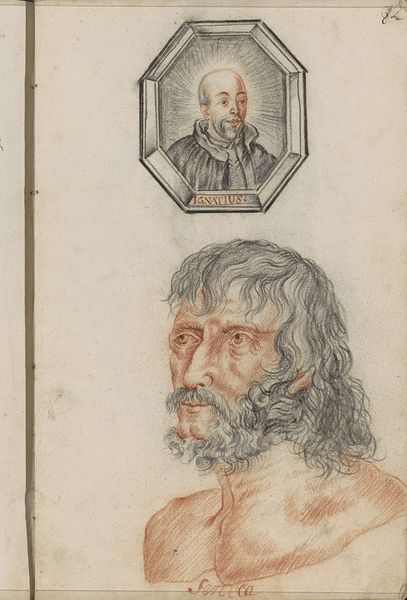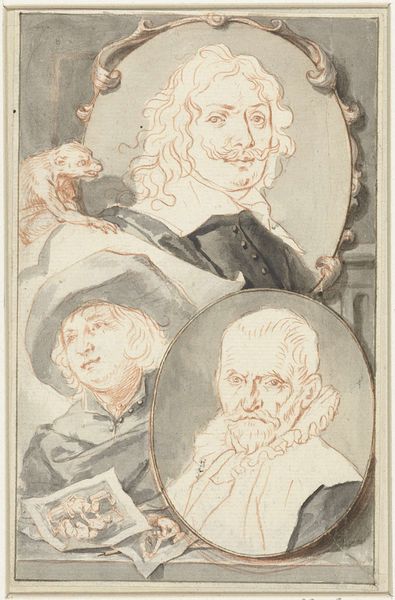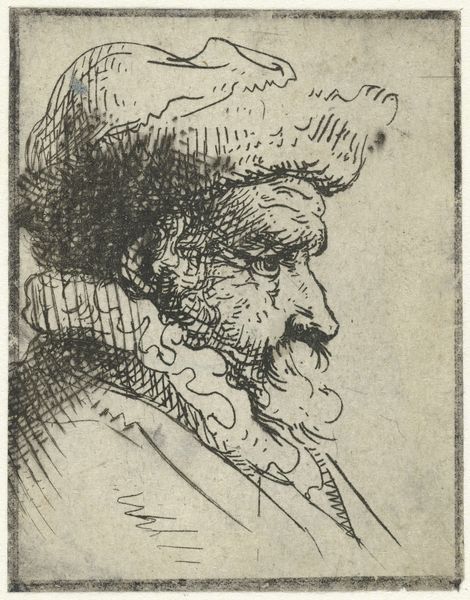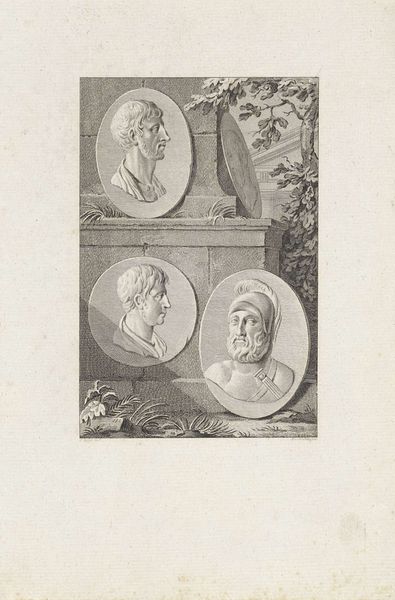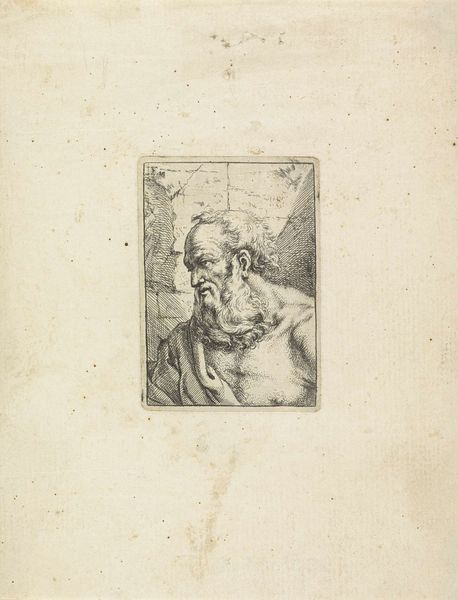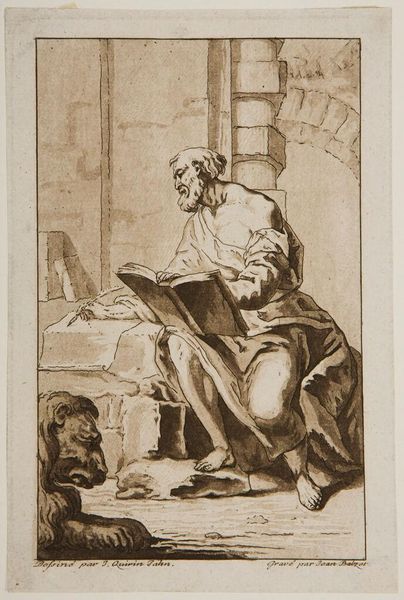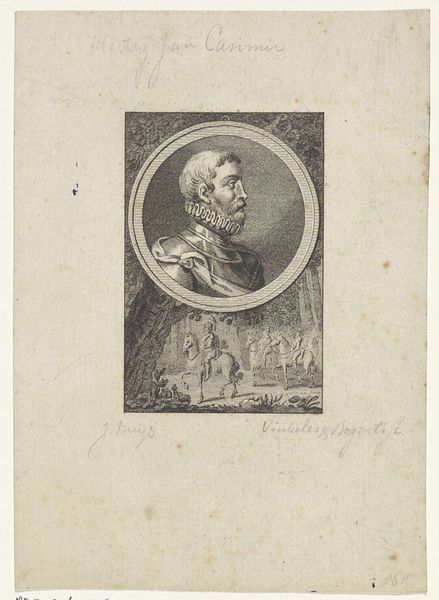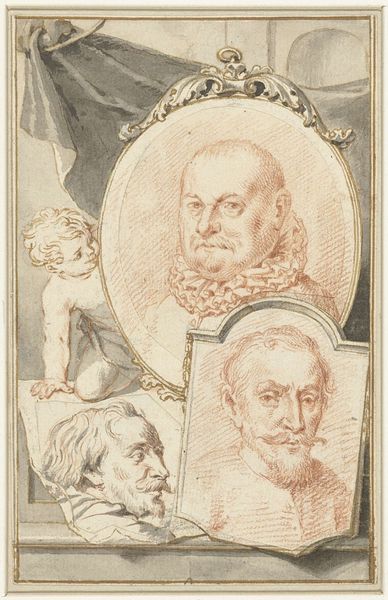
drawing, ink
#
portrait
#
drawing
#
baroque
#
pencil sketch
#
ink
Dimensions: height 154 mm, width 100 mm
Copyright: Rijks Museum: Open Domain
Editor: Here we have Jacob Houbraken's "Portraits of Wencelaus Koeberger and Lucas van Uden," made between 1708 and 1780. It's an ink and pencil drawing at the Rijksmuseum. It’s a little odd – like looking at two artists' busts, unfinished perhaps. How do you interpret this work? Curator: This piece opens a fascinating window onto the social dynamics of artistic representation. These are portraits of artists, yes, but framed as works-in-progress, almost like commodities within the art market itself. Houbraken seems to be subtly questioning the very notion of artistic genius and its representation. Notice how the image’s composition invites us to contemplate how artists gain recognition and lasting power. The portraits almost seem like placeholders – have you ever thought about why we memorialize certain figures and not others? Editor: I hadn't really considered that! So you’re saying it's less about celebrating individual talent and more about critiquing the system? Curator: Exactly. It also encourages us to consider the Baroque period's relationship with the Renaissance, particularly around the idealization of artists and the role of the academy. This drawing makes visible some of the subtle mechanisms of exclusion within the art world. Do you think the unfinished nature of the piece speaks to those mechanisms? Editor: Possibly! Maybe by showing them incomplete, Houbraken suggests they aren't entirely accepted or canonized figures. It's really made me rethink the power structures at play, and the social dimensions that determine how we value art and artists, and who has the agency. Curator: Indeed. Recognizing those structures lets us engage more critically with art history and contemporary art. Editor: Absolutely! It's made me think about who gets remembered and why.
Comments
No comments
Be the first to comment and join the conversation on the ultimate creative platform.
